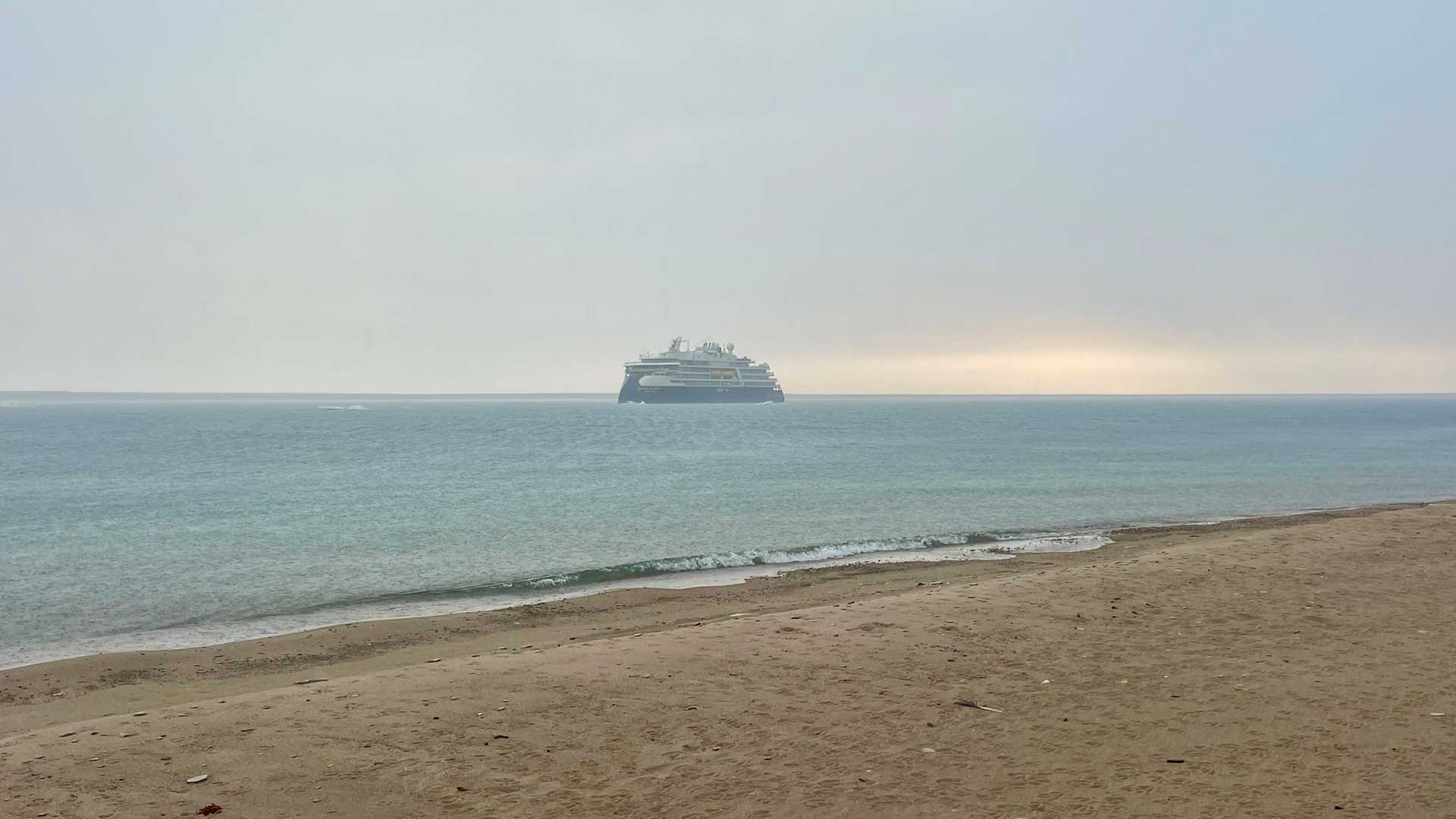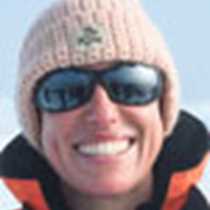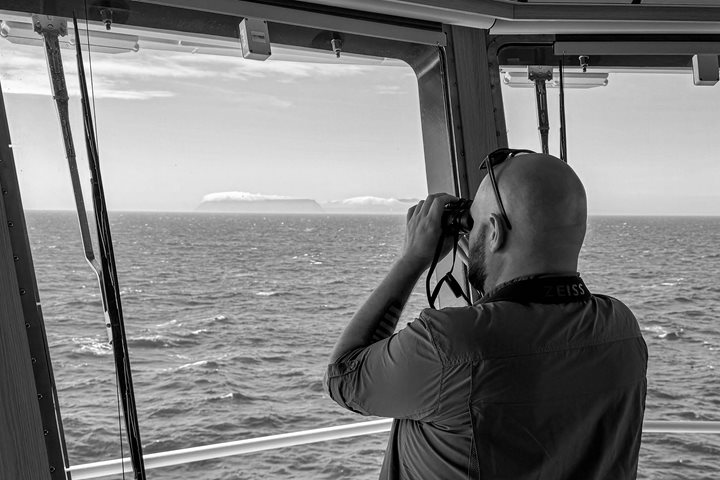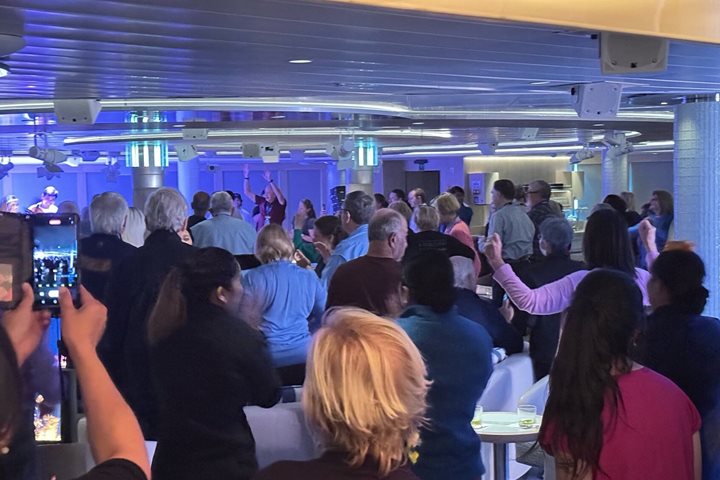We awoke to promising conditions for morning activities ashore as we approached Qikiqtaryuaq, formerly Jenny Lind Island. The island was named for the Swedish-born opera singer, Jenny Lind. At only 420 sq km (160 sq mi), the small island is in the Kitikmeot Region of Nunavut, Canada. It’s located in the Queen Maud Gulf, about 120 km (75 mi) southeast of Cambridge Bay. The island has one of the Distant Early Warning (DEW) Line sites (CAM-1A). The DEW Line, a Cold War communications network, was made up of more than 60 manned radar installations and extends 4,800 km (3,000 miles) from Northwestern Alaska to Eastern Baffin Island. The network served as a warning system for the United States and Canada; it could detect and verify the approach of aircraft or intercontinental ballistic missiles (ICBMs) from the Soviet Union.
Following breakfast, we took Zodiacs ashore to explore Jenny Lind Island with short, medium, or long walks. Being out on the tundra was such an incredible experience. We identified a number of arctic plant species. From the dwarf willow to the bright green cushions of moss campion, there was something to see everywhere we looked. There were also quite a few signs of animals around, including snow goose and caribou tracks and signs of muskox. We spent an educational and fun morning learning all about this unique ecosystem.
In the afternoon, we had two great presentations by our staff members. Archeologist Dan Odess took us back in time for a closer look at the Thule and Dorset cultures. Adam Maire followed things up with a highly anticipated presentation, “Lost in the Ice: The Franklin Expedition.” We ended the day with an incredible recap that summarized our experiences, and we enjoyed our dinner followed by an incredible sunset.







